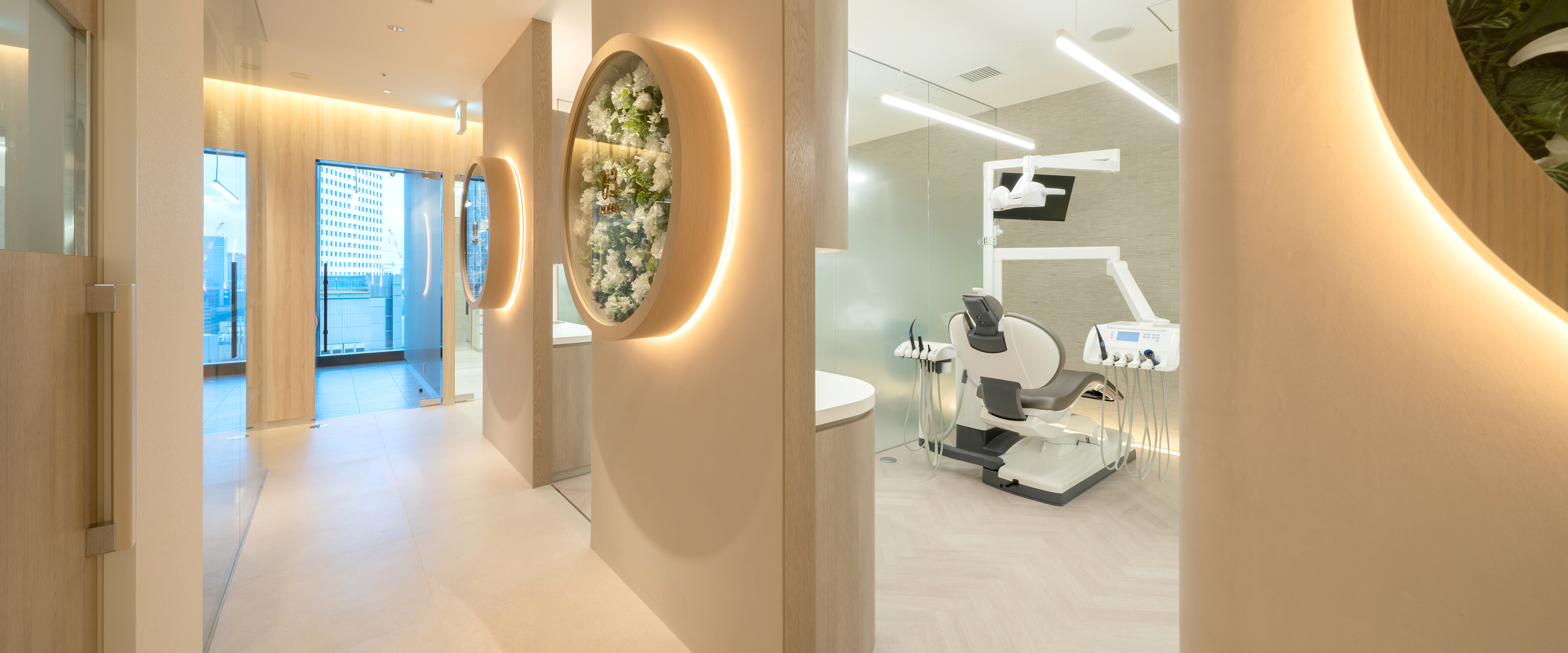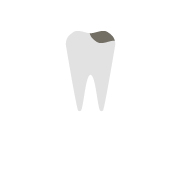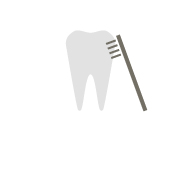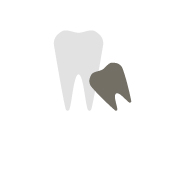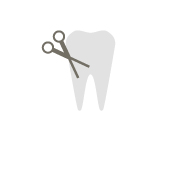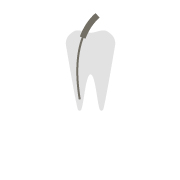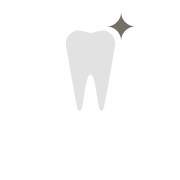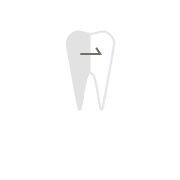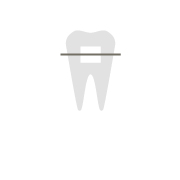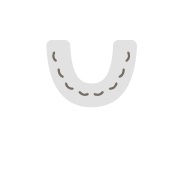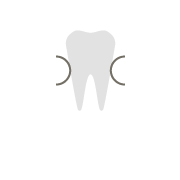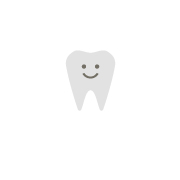Aesthetics-Oriented Treatment(Esthetics)
What is Aesthetic Dentistry?

Aesthetic dentistry is a comprehensive field of dentistry that focuses on beautification. However, it does not mean making teeth unnaturally white. The main goal of aesthetic dentistry is to restore natural beauty such that even a dentist’s eye cannot distinguish them at all from natural teeth.
It doesn’t matter if a tooth has aged, turned brown, worn out its bite, or become misshapen. If it blends in so well that it is completely indistinguishable from the surrounding teeth and functions like a natural tooth, it is still very beautiful.
With conventional dental technology, it has been very difficult to perform dental procedures to a level where treated teeth are indistinguishable from natural teeth. But in the modern age, this is now possible. The beauty of teeth comes not only from their color and shape, but also from the appearance of natural aesthetics. We would like to provide you with the dazzling beauty of natural teeth.
Features of our esthetic treatment
- Treatment without Filing Teeth “Do everything you can to leave natural teeth unharmed.” This is the primary concern in aesthetic dentistry. There is no artificial tooth that can surpass a natural tooth in terms of longevity. It might be easy to shave off part of the tooth and put in ceramics that look lovely at the time, but their appearance is temporary and they will always cause difficulties in the long run. Modern aesthetic dentistry around the world, especially in Europe, is focused on treating teeth to make them as beautiful as possible without damaging them. To achieve this the latest treatment techniques making the most of available microscopes and digital technology have become indispensable. Your teeth are precious and meant to last a lifetime. We provide them with beauty above and beyond their natural appeal, with as little intrusion to them as possible.
- Short Treatment Times through State-of-the-Art Digital Treatment Just as our daily lives have become more and more digitalized, dental treatment is now in the digital age as well. There are of course difficulties in finalizing and mastering the use of digital treatment technologies, such that not all clinics will have the same qualifications of them to use. However, we at Smile Plan Dental Clinic OSAKA do our best to actively introduce more and more of them to our clinic. The advantage of digital treatment is that it shortens time required for treatment and data logging, making treatment options easier to understand and carry out. With our state-of-the-art equipment, we provide cutting edge aesthetic & restorative treatment options.
- Custom-Made Precision Prosthetics, from start to finish At Smile Plan, our dental prosthetics are all produced in-house by the technicians at our Digital Dental Laboratory. These dental technicians, who excel in cosmetic dentistry and implant treatment, listen carefully to each patient’s requests and custom-make each tooth to suit each individual patient, so you can be sure to get your teeth exactly as you envision them.
All-Ceramic and Its Benefits

All-ceramic is a type of crown that does not use any metal and is made entirely of ceramic. It is the best treatment option among aesthetic dental treatments for those who seek a highly aesthetically pleasing finished look.
-
Body-friendly materials
 All-ceramic refers to any crown made entirely from ceramic, without using any metal. When making that traditional ceramic teeth, metal frames are used inside to compensate for lack of strength. However, modern technology has made it possible to create dental prosthetics entirely from ceramic that are just as strong as metal-using crowns.
All-ceramic refers to any crown made entirely from ceramic, without using any metal. When making that traditional ceramic teeth, metal frames are used inside to compensate for lack of strength. However, modern technology has made it possible to create dental prosthetics entirely from ceramic that are just as strong as metal-using crowns.
Moreover, conventional crowns that use metal frames have problems such as a lack of translucency, incompatibility with metal allergies, and can cause blackening of the teeth and gums over time. But by using all-ceramic, these problems can be solved. Because all-ceramic prosthetics do not discolor or deteriorate, they will remain beautiful for years to come. -
Beautiful, Lustrous Shine
 Conventional porcelain fused to metal crowns(PFM) are unable to reproduce the innate beauty of natural teeth because the metal core of the crown blocks light from passing through. Furthermore, the shadow from the blocked light can make the surrounding gums look dark, further inhibiting a natural look.
Conventional porcelain fused to metal crowns(PFM) are unable to reproduce the innate beauty of natural teeth because the metal core of the crown blocks light from passing through. Furthermore, the shadow from the blocked light can make the surrounding gums look dark, further inhibiting a natural look.
All-ceramic prosthetics are made entirely without metal, allowing light to pass through easily. You can achieve a natural, seamless beauty that is indistinguishable from your natural teeth. It is an especially essential material for front teeth treatments, where greater aesthetic appeal is preferred. -
Precision Design
 Until now, all restorative prosthetics fitted to patients’ mouths were made from start to finish by dental technicians. But with the advent of all-ceramics, the majority of the craftsmanship is handled by machine, leaving the finer details of surface shape and color to experienced eyes and hands.
Until now, all restorative prosthetics fitted to patients’ mouths were made from start to finish by dental technicians. But with the advent of all-ceramics, the majority of the craftsmanship is handled by machine, leaving the finer details of surface shape and color to experienced eyes and hands.
Dental technicians design modern restorative prosthetics on computers, and then uses CAD/CAM technology to carve out the ceramic and create teeth. This allows for consistent, highly accurate restorative prosthetics to be produced in a short time. All-ceramic dental prosthetics stand tall as the latest advancement in dental technology.
Types of Ceramics
-
 Laminate veneers, or dental laminates, are a treatment option that provides front teeth with their ideal color, shape, and balance by lightly shaving the surface of the enamel and attaching a thin ceramic shell to it. For teeth that are naturally discolored, have imbalanced sizes, are at a poor angle, or are misaligned, this method can create ideal, properly aligned and beautiful teeth in a short period of time while minimizing damage to the teeth.
Laminate veneers, or dental laminates, are a treatment option that provides front teeth with their ideal color, shape, and balance by lightly shaving the surface of the enamel and attaching a thin ceramic shell to it. For teeth that are naturally discolored, have imbalanced sizes, are at a poor angle, or are misaligned, this method can create ideal, properly aligned and beautiful teeth in a short period of time while minimizing damage to the teeth.
-
 Not only do they provide the highest level of aesthetics, but laminate veneers also have the great advantage of being able to improve your smile without filing down or shaving away much of the teeth. However, attempting to fix tooth alignment, orientation, or position issues by only using laminate veneers will require shaving off greater amounts of the enamel.
Not only do they provide the highest level of aesthetics, but laminate veneers also have the great advantage of being able to improve your smile without filing down or shaving away much of the teeth. However, attempting to fix tooth alignment, orientation, or position issues by only using laminate veneers will require shaving off greater amounts of the enamel.
However, orthodontic treatment can be used to correct the position and orientation of the teeth, reducing the required amount of shaving. By combining laminate veneers with orthodontic treatment, you can achieve more beautiful teeth with minimal damage. -
No matter how well crafted a dental prosthetic is, it cannot compare to the beauty of natural teeth. If your natural teeth are chipped or worn down, then the ideal treatment is one that preserves the color and luster of your natural teeth as much as possible. The most distinctive feature of laminate veneers is the thinness of the applied ceramic.
By using fine, translucent ceramics, the color of the underlying natural teeth is reflected outward, allowing us to create an aesthetic that is closer to natural teeth than all-ceramic crowns. By whitening your teeth before applying laminate veneers, you can reach a more idyllic whiteness and beauty for your teeth.
Laminate veneers not only retains the natural qualities of your teeth, it revitalizes the beauty of them. -
 Porcelain Fused to Metal Crowns, or PFM crowns, combine the aesthetics of ceramics with the high strength of metal, making them an excellent prosthesis for their high reliability and wide range of applications. However, in recent years, it has become difficult to say that this is sufficient enough to meet the high standards for aesthetic dental treatment. Of all the current dental treatments, metal-free all-ceramic prosthetics are the closest to natural teeth for both their beauty and their quality.
Porcelain Fused to Metal Crowns, or PFM crowns, combine the aesthetics of ceramics with the high strength of metal, making them an excellent prosthesis for their high reliability and wide range of applications. However, in recent years, it has become difficult to say that this is sufficient enough to meet the high standards for aesthetic dental treatment. Of all the current dental treatments, metal-free all-ceramic prosthetics are the closest to natural teeth for both their beauty and their quality.
For molars, we recommend zirconia crowns or metal-bonded crowns, which combine both strength and aesthetic, but for front teeth, alumina-based all-ceramic crowns are the best option. -
 An inlay or partial crown is a treatment method in which only the part of the tooth that has been damaged such as a small cavity is removed and a partial filling is glued in place. This method is mainly used to treat back teeth. There are several types of inlays made from ceramics (porcelain), but ceramic inlays made using Ivoclar Vivadent’s e.max Press are characterized by their strength of over 400 MPa and high translucency.
An inlay or partial crown is a treatment method in which only the part of the tooth that has been damaged such as a small cavity is removed and a partial filling is glued in place. This method is mainly used to treat back teeth. There are several types of inlays made from ceramics (porcelain), but ceramic inlays made using Ivoclar Vivadent’s e.max Press are characterized by their strength of over 400 MPa and high translucency.
Ceramic inlays blend in well with your teeth. After treatment, the boundary between the tooth and the inlay is almost invisible. They are highly durable and there is no need to worry about cracking, so you can use them worry-free for many years to come. -
 FibreKor combines a fiber post and a fiber-containing resin core to create an internal support for your tooth. Its hardness and elasticity are similar to dentin, so it is unlikely to cause root fractures. Additionally, it does not contain metal, so it does not lead to discoloration of the tooth root or gums caused by the dissolution of metal ions, nor does it trigger metal allergies.
FibreKor combines a fiber post and a fiber-containing resin core to create an internal support for your tooth. Its hardness and elasticity are similar to dentin, so it is unlikely to cause root fractures. Additionally, it does not contain metal, so it does not lead to discoloration of the tooth root or gums caused by the dissolution of metal ions, nor does it trigger metal allergies.
Teeth that have had their nerves removed become brittle, and if a metal base is placed, breakage of the tooth often occurs. In order to prolong the life of treated teeth, we generally recommend a fiber core.
Laminate Veneers
Minimal Damage to the Teeth
Bringing the Most Beauty to Your Teeth
Porcelain Fused to Metal Crown
Ceramic Inlay
FibreKor
Cosmetic Dentistry Pricings
| 1 tooth | 55,000 to 165,000 yen (tax included) |
|---|

